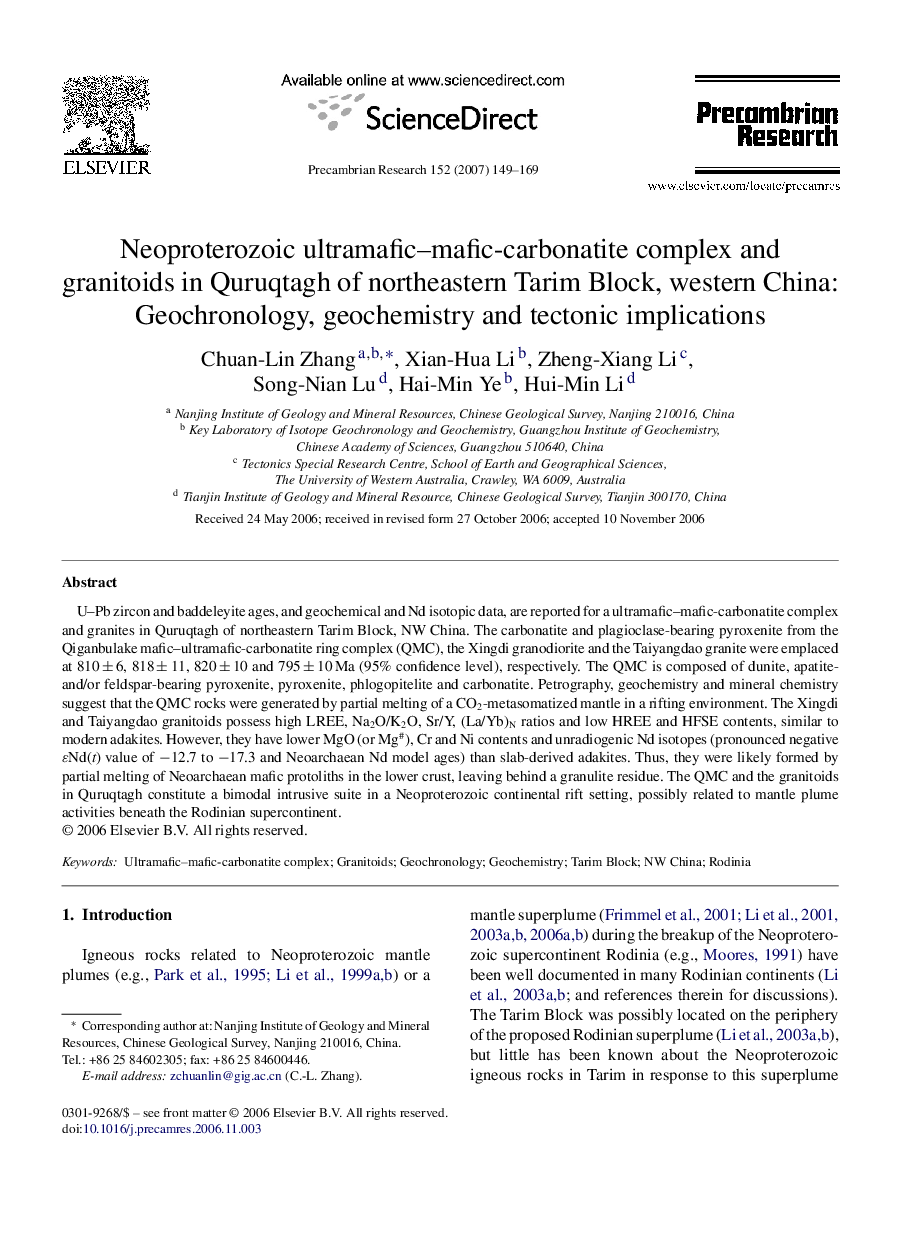| Article ID | Journal | Published Year | Pages | File Type |
|---|---|---|---|---|
| 4724633 | Precambrian Research | 2007 | 21 Pages |
U–Pb zircon and baddeleyite ages, and geochemical and Nd isotopic data, are reported for a ultramafic–mafic-carbonatite complex and granites in Quruqtagh of northeastern Tarim Block, NW China. The carbonatite and plagioclase-bearing pyroxenite from the Qiganbulake mafic–ultramafic-carbonatite ring complex (QMC), the Xingdi granodiorite and the Taiyangdao granite were emplaced at 810 ± 6, 818 ± 11, 820 ± 10 and 795 ± 10 Ma (95% confidence level), respectively. The QMC is composed of dunite, apatite- and/or feldspar-bearing pyroxenite, pyroxenite, phlogopitelite and carbonatite. Petrography, geochemistry and mineral chemistry suggest that the QMC rocks were generated by partial melting of a CO2-metasomatized mantle in a rifting environment. The Xingdi and Taiyangdao granitoids possess high LREE, Na2O/K2O, Sr/Y, (La/Yb)N ratios and low HREE and HFSE contents, similar to modern adakites. However, they have lower MgO (or Mg#), Cr and Ni contents and unradiogenic Nd isotopes (pronounced negative ɛNd(t) value of −12.7 to −17.3 and Neoarchaean Nd model ages) than slab-derived adakites. Thus, they were likely formed by partial melting of Neoarchaean mafic protoliths in the lower crust, leaving behind a granulite residue. The QMC and the granitoids in Quruqtagh constitute a bimodal intrusive suite in a Neoproterozoic continental rift setting, possibly related to mantle plume activities beneath the Rodinian supercontinent.
